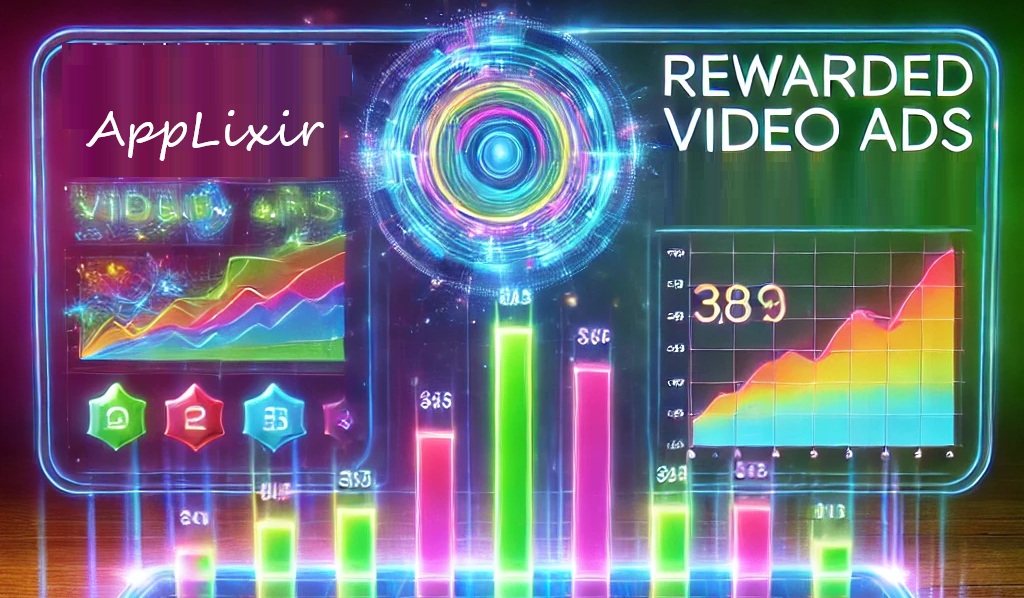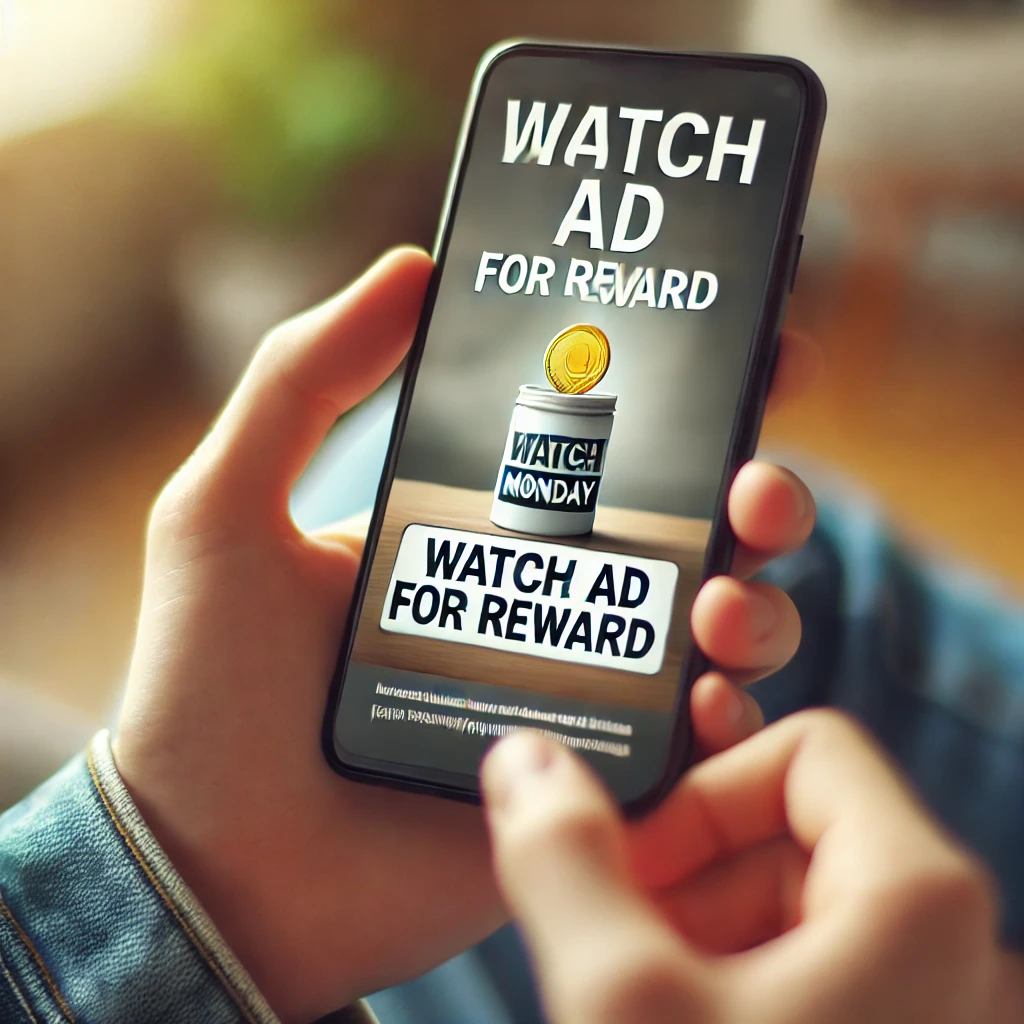Why Some Rewarded Ads Work Better Than Others: A Data-Driven Look
Rewarded video ads have become a dominant monetization strategy for mobile games. These ads offer players incentives, such as extra lives or virtual currency, in exchange for watching a short video. Unlike intrusive ads, rewarded videos provide value to users, increasing engagement and retention.
But not all rewarded ads perform equally well. Some drive high engagement and revenue, while others fail to capture user interest. What makes the difference? On my “Why Some Rewarded Ads Work Better Than Others: A Data-Driven Look” post, I will cover this main topic!
In the post, we’ll use data-driven insights to explore why some rewarded ads outperform others. We’ll examine key metrics, ad placement, reward value, personalization, and common mistakes that hinder ad effectiveness.
-
Contents
Understanding Rewarded Video Ad Performance Metrics
Continuing on Why Some Rewarded Ads Work Better Than Others: A Data-Driven Look post, to measure the effectiveness of rewarded ads, developers track specific performance metrics. These metrics reveal how well ads engage users and generate revenue.
a) eCPM (Effective Cost Per Mille)
eCPM calculates how much revenue an ad earns per 1,000 impressions. Higher eCPM means advertisers are willing to pay more for ad space, signaling strong engagement and conversions.
b) Engagement Rate
Engagement rate measures the percentage of players who watch an ad to completion. A high engagement rate suggests that the ad content is compelling and well-integrated into the game experience.
c) Conversion Rate
Conversion rate tracks how many users take action after watching an ad. This could include installing an advertised app or making an in-game purchase. Higher conversion rates indicate well-targeted and relevant ads.
d) Retention Impact
Retention impact assesses how rewarded ads affect user session length and return rates. Well-placed rewarded ads can increase retention by offering players valuable incentives at crucial moments.
By analyzing these metrics, developers can determine which rewarded ads perform best and refine their monetization strategy.
-
Factors That Make Some Rewarded Ads More Effective
a) Placement and Timing Matter
Ad placement significantly affects engagement. Poorly placed ads disrupt gameplay, leading to frustration. On the other hand, well-placed ads encourage players to watch voluntarily.
Best Placement Strategies (Based on Data Insights):
- Between Levels: Ads shown after completing a level see higher engagement than mid-game interruptions.
- Before Difficult Challenges: Players are more likely to watch ads if they need a boost to progress.
- Main Menu Placement: Placing an optional ad in the menu allows users to choose when they engage.
A study by Unity Ads found that rewarded videos placed before challenging levels increased engagement by 40%. This proves that strategic placement boosts ad effectiveness.
b) Reward Type and Value
The type of reward significantly impacts ad engagement. Players are more likely to watch ads if they feel the reward is valuable.
Psychology Behind Effective Rewards:
- Virtual Currency: Players perceive in-game currency as a valuable asset, making them more likely to engage with ads.
- Extra Lives: When players are about to lose, offering an extra life in exchange for watching an ad drives high engagement.
- Exclusive Content: Unlocking special characters, skins, or power-ups increases the likelihood of ad interactions.
Case Study: Reward Effectiveness in Mobile Games
A study of mobile RPG games found that ads offering exclusive content had a 30% higher engagement rate than ads providing basic in-game currency. This indicates that unique and limited-time rewards encourage more interaction.
c) Ad Length and User Attention
Ad length directly impacts user engagement. While longer ads provide more advertiser revenue, they risk losing viewer interest.
Optimal Ad Duration (Based on Engagement Data):
- 15-Second Ads: Short, engaging, and less disruptive, leading to higher completion rates.
- 30-Second Ads: Suitable for users deeply engaged in gameplay, but risks higher drop-off rates.
- Skippable Ads: Lower engagement rates but still generate revenue when users interact.
Research by AdMob shows that 15-second ads generate 20% higher completion rates than 30-second ads. Shorter ads keep users engaged without disrupting the experience.
d) Personalization and Targeting
AI-driven targeting enhances rewarded ad effectiveness. Personalized ads based on user behavior improve engagement and conversion rates.
Examples of AI-Powered Ad Targeting:
- Behavior-Based Ads: If a user frequently buys in-game currency, ads offering discounts on similar purchases perform better.
- Geo-Targeting: Ads relevant to a user’s location increase engagement rates.
- Interest-Based Ads: Players engaging with strategy games see higher engagement with ads promoting similar games.
Personalized rewarded ads increase engagement rates by up to 35%, according to a report by MoPub. This highlights the importance of targeted ad strategies.
-
Common Mistakes That Reduce Rewarded Ad Effectiveness

Continuing on Why Some Rewarded Ads Work Better Than Others: A Data-Driven Look post, even well-designed rewarded ads can fail if they are poorly executed. Some common mistakes reduce ad effectiveness, leading to lower engagement, poor user experience, and lost revenue. Avoiding these pitfalls ensures better monetization results.
a) Overloading Users with Too Many Ads
Too many ads can frustrate users and lead to ad fatigue, where players start ignoring or avoiding ads altogether. If users feel bombarded with ads, they may quit the game or leave negative reviews.
Signs of Ad Overload:
- Players frequently skip ads or close the game after watching one.
- Decreased engagement over time, as users become desensitized.
- Negative feedback or complaints in app store reviews.
Best Practices to Avoid Ad Overload:
- Limit Rewarded Ads per Session: Research suggests 2-3 rewarded ads per session is the sweet spot. Any more can feel excessive.
- Offer Ads When It Makes Sense: Ads should appear at natural breakpoints, not during high-action gameplay moments.
- Provide an Opt-In Experience: Players should feel they are choosing to watch ads rather than being forced.
Data from AppLovin shows that games with fewer but well-placed rewarded ads see 25% higher retention rates than those with excessive ads.
b) Poorly Integrated Ads That Disrupt Gameplay
Rewarded ads work best when they blend seamlessly into the user experience. If they disrupt gameplay or feel intrusive, players will disengage.
Examples of Poor Ad Integration:
- Ads appearing unexpectedly during crucial gameplay moments.
- Ads interrupting action without giving players control.
- Forced ads that players must watch before continuing their game.
How to Seamlessly Integrate Ads:
- Use Natural Game Breaks: Ads placed between levels or at logical stopping points feel less intrusive.
- Offer Ads as a Choice: Players should feel they have control over when to watch an ad.
- Ensure Smooth Transitions: Ads should not break the game flow or cause performance issues.
Games that strategically place ads within natural breakpoints see 40% higher engagement rates, according to a study by Unity Ads.
c) Offering Low-Value Rewards
If a reward isn’t worth the time it takes to watch an ad, users will ignore it. Players expect meaningful rewards in exchange for their time.
What Makes a Reward “Low Value”?
- Rewards that don’t significantly impact gameplay.
- In-game currency that is too small to be useful.
- Items that players can earn easily without watching ads.
How to Provide High-Value Rewards:
- Match Rewards to Player Needs: Offer useful rewards like extra lives, powerful boosters, or premium content.
- Scale Rewards Based on Progress: Give newer players small boosts but offer bigger incentives for advanced players.
- Experiment with Different Rewards: A/B test different rewards to see which ones generate higher engagement.
According to IronSource, games that offer meaningful in-game benefits for watching rewarded ads see 35% higher engagement than those offering minimal rewards.
-
How Developers Can Optimize Rewarded Video Ads
Continuing on Why Some Rewarded Ads Work Better Than Others: A Data-Driven Look post, developers can maximize the effectiveness of rewarded ads by refining their strategies through testing, data analysis, and user experience improvements.
a) A/B Testing Ad Variations
A/B testing allows developers to compare different ad strategies and determine what works best. Testing different elements of rewarded ads helps optimize engagement and revenue.
What to A/B Test?
- Ad Placement: Test whether ads perform better before difficult levels, between rounds, or on the main menu.
- Reward Types: Compare extra lives vs. virtual currency vs. exclusive content to see what players prefer.
- Ad Length: Experiment with 15s vs. 30s ads to find the optimal balance between revenue and retention.
Why A/B Testing Matters?
A study by Google AdMob found that developers who actively A/B test ad placement and rewards increase ad engagement by 50%.
b) Using Analytics Tools to Track Performance
Analytics tools provide key data on ad performance. Tracking these metrics helps developers refine their ad strategy.
Best Tools for Tracking Rewarded Ad Performance:
- Google AdMob: Provides insights into eCPM, fill rate, and engagement trends.
- Unity Ads: Tracks ad completion rates, retention impact, and revenue per player.
- AppLovin and IronSource: Offer AI-powered analytics to optimize ad placement and targeting.
Key Metrics to Monitor:
- eCPM (Revenue per 1,000 impressions)
- Engagement Rate (Completion rate of rewarded ads)
- Retention Rate (Impact of ads on long-term user retention)
- Conversion Rate (How many users take action after viewing an ad)
c) Balancing Monetization with User Experience
A well-balanced monetization strategy ensures ads don’t hurt user retention. The goal is to maximize revenue without frustrating players.
How to Balance Ads and UX?
- Space Out Ads: Avoid showing ads too frequently within short timeframes.
- Offer a No-Ad Option: Provide an in-app purchase to remove ads for players who prefer an ad-free experience.
- Monitor User Feedback: Pay attention to app reviews and in-game behavior to adjust ad strategy.
According to MoPub, games that balance monetization with user experience see 20% higher lifetime value (LTV) per user.
AppLixir Rewarded Video Ad
To conclude my post on Why Some Rewarded Ads Work Better Than Others: A Data-Driven Look post, Rewarded video ads are a powerful monetization tool when implemented correctly. Strategic ad placement, high-value rewards, AI-driven targeting, and A/B testing help developers maximize engagement and revenue. However, success depends on choosing the right monetization platform that provides flexibility, analytics, and seamless integration.
That’s where AppLixir comes in. As a leading rewarded video ads platform, AppLixir helps developers maximize ad revenue without disrupting the player experience. With easy SDK integration, advanced analytics, and high eCPM rates, AppLixir ensures that your rewarded ads perform at their best.
By avoiding common mistakes and embracing new trends like interactive ads and AI-driven personalization, developers can enhance user experience while boosting monetization. Looking to optimize your rewarded video ads? Try AppLixir today and start increasing your ad revenue while keeping players engaged!



